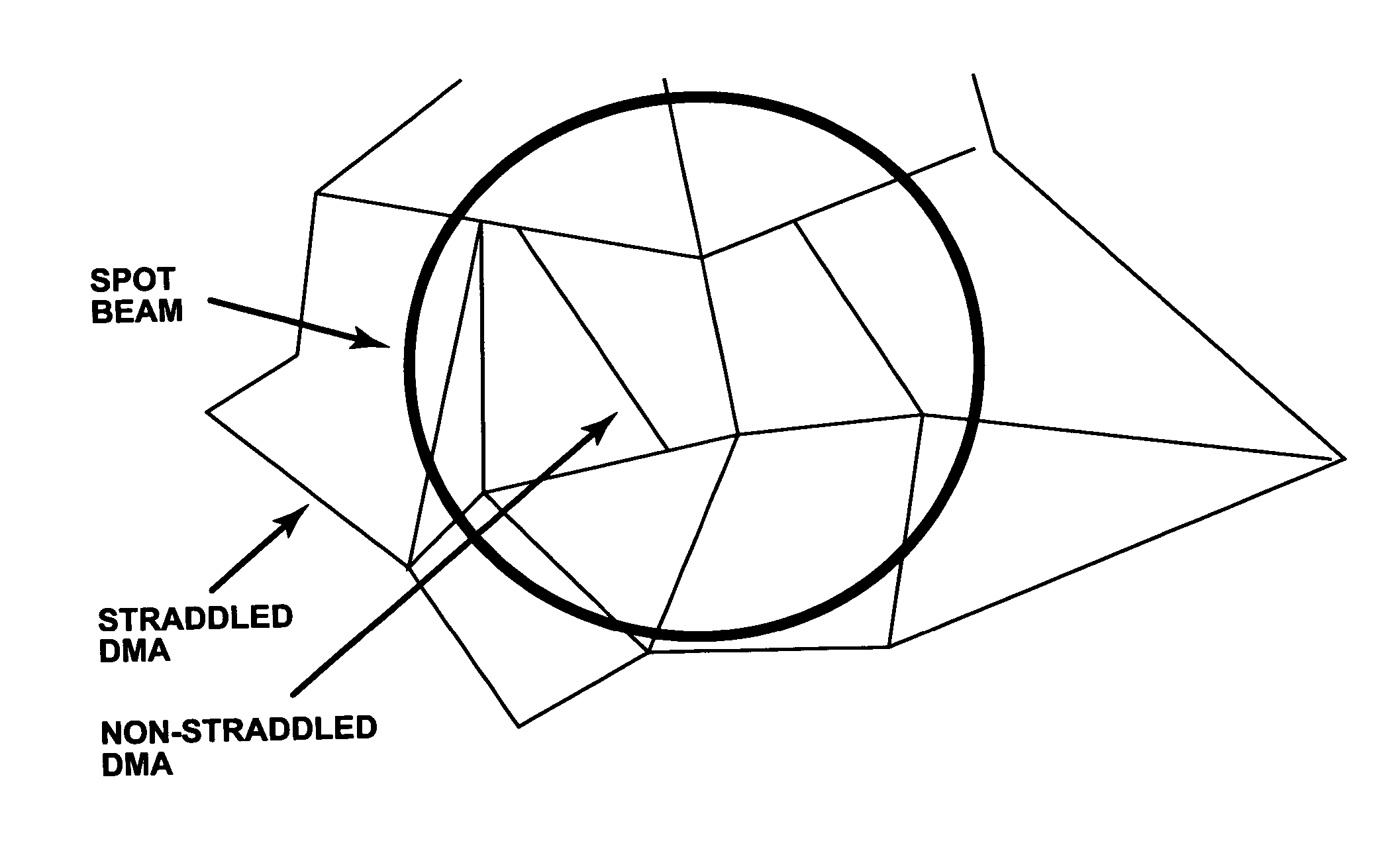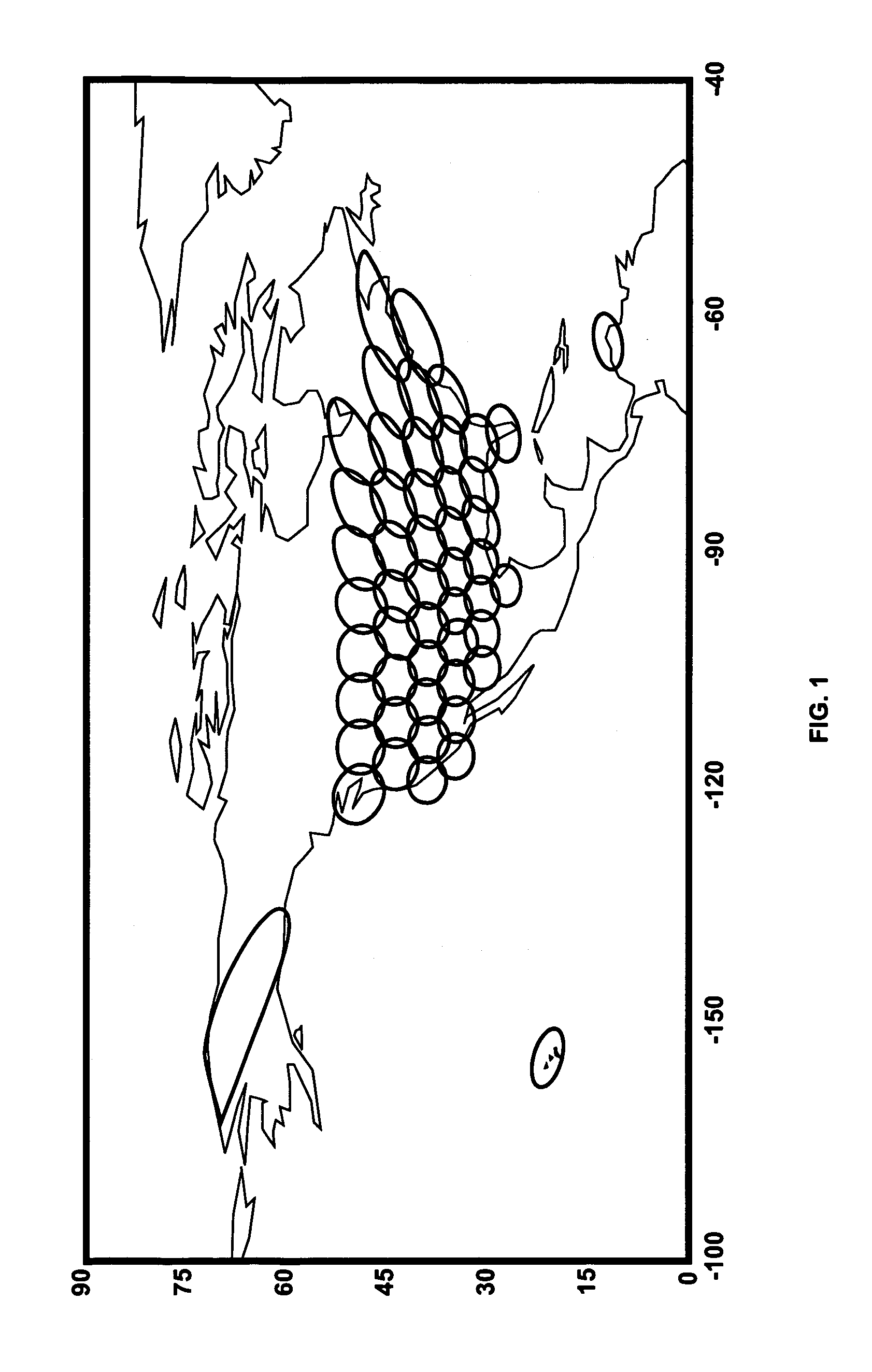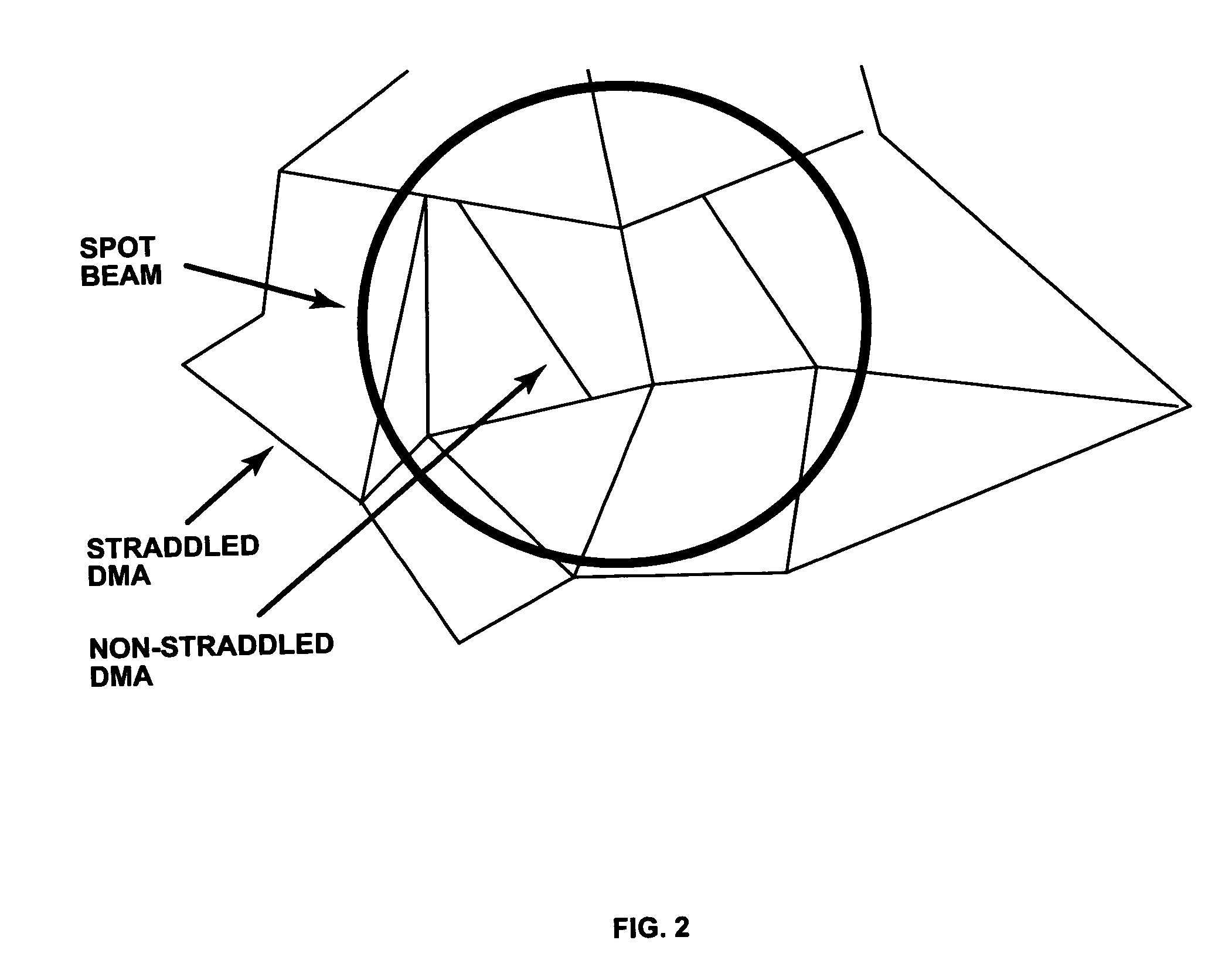Satellites and signal distribution methods and off-set pattern for sending signals
a satellite and signal technology, applied in the field of satellite and signal distribution methods, can solve the problems of increasing the cost of service, reducing the transmission efficiency of the satellite system, and large expansion of the useful bandwidth via spot beams, so as to improve the transmission efficiency, reduce the inefficiencies caused, and double the capacity
- Summary
- Abstract
- Description
- Claims
- Application Information
AI Technical Summary
Benefits of technology
Problems solved by technology
Method used
Image
Examples
example 1
[0040]The inventor has studied a spot beam system serving the U.S. making use of conventional spot-beam technology, called the “Conventional Spot-Beam System” and an “Offset Spot-Beam System” of the invention. In the Conventional Spot-Beam system there were 48 co-axial spot-beams serving the continental United States (CONUS) on two polarizations (Patterns 1 and 2 are coaxial but orthogonally polarized). In the Offset Spot-Beam System of the invention, there were also 48 spot-beams serving CONUS on one polarization and 48 spot-beams serving CONUS on the orthogonal polarization but Pattern 2 was offset, as described herein; Pattern 2 was moved south by one half of a coverage beamwidth (as indicated in FIGS. 3 and 4). All 215 DMAs and approximately 1,600 TV channels are assigned to the individual spot-beams to avoid straddling to the maximum possible extent, and to promote diffusion in the saturated New York City spot-beam. The results of the two analyses, for a conventional spot-beam ...
example 2
[0045]A public safety activity involving recovery and search and rescue is normally conducted within state and county boundaries having stringent requirements for survivable two-way communications. A system of one or more multiple spot-beam satellites and simple uplink earth stations can provide the required survivable communications. Coverage of the counties and states could embody the Offset Patterns described herein to improve the communications efficiency by minimizing straddling and promoting diffusion. While counties and states are considered here, any mosaic of geographic areas might benefit from the invention.
[0046]One skilled in the art can devise and create numerous other examples according to this invention. Examples may also incorporate additional imaging, thermometry, and other elements known in the art. One skilled in the art is familiar with techniques and devices for incorporating the invention into a variety of devices and of designing improved devices through the u...
PUM
 Login to View More
Login to View More Abstract
Description
Claims
Application Information
 Login to View More
Login to View More - R&D
- Intellectual Property
- Life Sciences
- Materials
- Tech Scout
- Unparalleled Data Quality
- Higher Quality Content
- 60% Fewer Hallucinations
Browse by: Latest US Patents, China's latest patents, Technical Efficacy Thesaurus, Application Domain, Technology Topic, Popular Technical Reports.
© 2025 PatSnap. All rights reserved.Legal|Privacy policy|Modern Slavery Act Transparency Statement|Sitemap|About US| Contact US: help@patsnap.com



